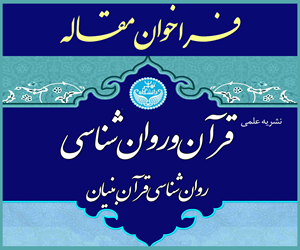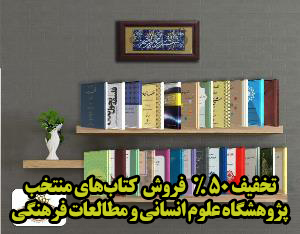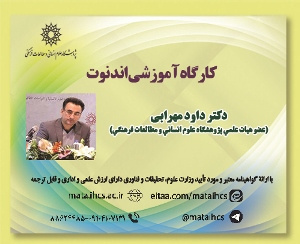دیرینه شناسی تحول صورت و محتوای نقاشی تاریخی در گذار از نئوکلاسی سیسم به پست مدرنیسم (مقاله علمی وزارت علوم)
درجه علمی: نشریه علمی (وزارت علوم)
آرشیو
چکیده
مقدمه: تصویرگری تاریخ ثبت تصویری واقع گرایانه یک رویداد تاریخی نیست، بلکه ابزاری برای بازتعریف یک رویداد تاریخی به واسطه رسانه تصویری است. در بازنمایی تصویری تاریخ، هم جزئیاتی که قابلیت بیان کلامی ندارند تصویرسازی می شوند و هم نگرش جوامع نسبت به ماهیت رویداد تاریخی نمایان می گردد. مطالعه آثار ژانر نقاشی تاریخی اروپا و آمریکا در خلال قرون ۱۸ تا دهه اول قرن ۲۱ میلادی نشان دهنده چندین دوره گذار و تحول است. این نقاط عطف را می توان در گذار از نئوکلاسی سیسم به مدرنیسم و مدرنیسم به پست مدرنیسم تشخیص داد. لذا هدف پژوهش حاضر تبیین چگونگی تحول نقاشی تاریخی در گذار از نئوکلاسی سیسم به پست مدرنیسم در نسبت با معرفت دوران است. مسأله این است که تغییر در نگرش جوامع نسبت به مفهوم تاریخ چه تحولی در شیوه بازنمایی تصویری تاریخ در ادوار یاد شده ایجاد کرده است. روش پژوهش: این پژوهش از نوع کیفی است که به روش توصیفی-تحلیلی با رویکرد تاریخی انجام شده است و روش گردآوری اطلاعات اسنادی است. بر این اساس، مصداق ها از جامعه آماری مشخص که بر مبنای تعریف نقاشی تاریخی در بازه زمانی مذکور محدود گردیده اند به روش انتخابی و بر مبنای معرف بودن در معیارهای مورد نظر گزینش شدند و با رویکرد دیرینه شناسی مورد تحلیل قرارگرفتند. دیرینه شناسی تصویر یک روش تحلیل تاریخی با تأکید بر «نقاط گسست» به جای «پیوستگی» و «تکرار» است.یافته ها: تحلیل ها نشان دادند که اسلوب و محتوای نقاشی تاریخی در گذار از نئوکلاسی سیم به مدرنیسم و مدرنیسم به پست مدرنیسم متحول شده است؛ به گونه ای که تصویرگری مضامین اسطوره ای و تاریخی مربوط به گذشته دور در نقاشی های اواخر قرن 18 میلادی جای خود را به تصویرگری رخدادهای معاصر دادند. در مدرنیسم هنری، سبک های تصویرگری تاریخ و در پست مدرنیسم موضوع و مخاطبان این ژانر تغییرات اساسی داشتند؛ همچنین کارکرد نقاشی تاریخی از اسطوره سازی و بزرگ نمایی یک رویداد تاریخی به عادی سازی و حتی به چالش کشیدن آن تغییر یافت.نتیجه گیری: تصویر گری تاریخ رابطه مستقیم با مفهوم تاریخ در ادوار مختلف داشته است. از آنجا که تا پیش از عصر روشنگری تاریخ یک چرخه تکرار شونده پنداشته می شد، در نقاشی تاریخی نیز ایده آل سازی و اسطوره سازی گذشته مشاهده می شود. در آستانه مدرنیته تاریخ سیر حرکت رویدادها به سمت نتیجه مشخص پنداشته می شد، ولی با فروپاشی انگاره پیشرفت روایت های تاریخی متکثر و موضعی اهمیت یافتند. همین رویکرد در سبک و موضوع نقاشی تاریخی این ادوار بازتاب یافته است.Archaeology of the form and content transformation in the historical painting in the transition from neoclassicism to postmodernism
Introduction: Historical illustration is not a realistic recording of a historical event, but a tool to represent a historical event through visual media. In the visual representation of history, both the details that cannot be expressed verbally are depicted, and the attitude of the societies towards the nature of the historical event is revealed. Studying the works of the European and American historical painting genre from the 18th century to the first decade of the 21st century shows several periods of transition and transformation. These turning points can be recognized in the transition from neoclassicism to modernism and modernism to postmodernism. Therefore, the purpose of the current research is to explain how historical painting changes in the transition from neoclassicism to postmodernism concerning the knowledge of the era. The problem is that the change in society's attitude towards the concept of history has caused a change in the way of visual representation of history in the mentioned periods.Research Method: This research is qualitative and was conducted using a descriptive-analytical method and a historical approach. The data collection method was citation studies. Accordingly, the samples were selected from a specific statistical population that is limited based on the definition of historical painting in the mentioned time frame and representativeness in the desired criteria and were analyzed using an archeological approach. Image archeology is a method of historical analysis with an emphasis on "points of discontinuity" rather than "continuity" and "repetition".Findings: The analysis showed that the style and content of historical painting have changed in the transition from neoclassicism to modernism and modernism to postmodernism. The depiction of mythological and historical themes related to the past period in the paintings of the late 18th century gave their place to the depiction of contemporary events. In artistic modernism, the styles of depicting history, and in postmodernism, the subject and audience of this genre had fundamental changes. Also, the function of historical painting changed from mythologizing and exaggerating a historical event to normalizing and even challenging it.Conclusion: The depiction of history has had a direct relationship with the concept of history in different periods. Since history was considered a recurring cycle before the Enlightenment era, the idealization and mythologizing of the past can also be observed in historical painting. Threshold of the modernity of history was considered the course of events moving towards a certain result. However, with the collapse of the concept of progress, multiple and localized historical narratives became important. The same approach is reflected in the style and theme of a historical painting of these periods.




